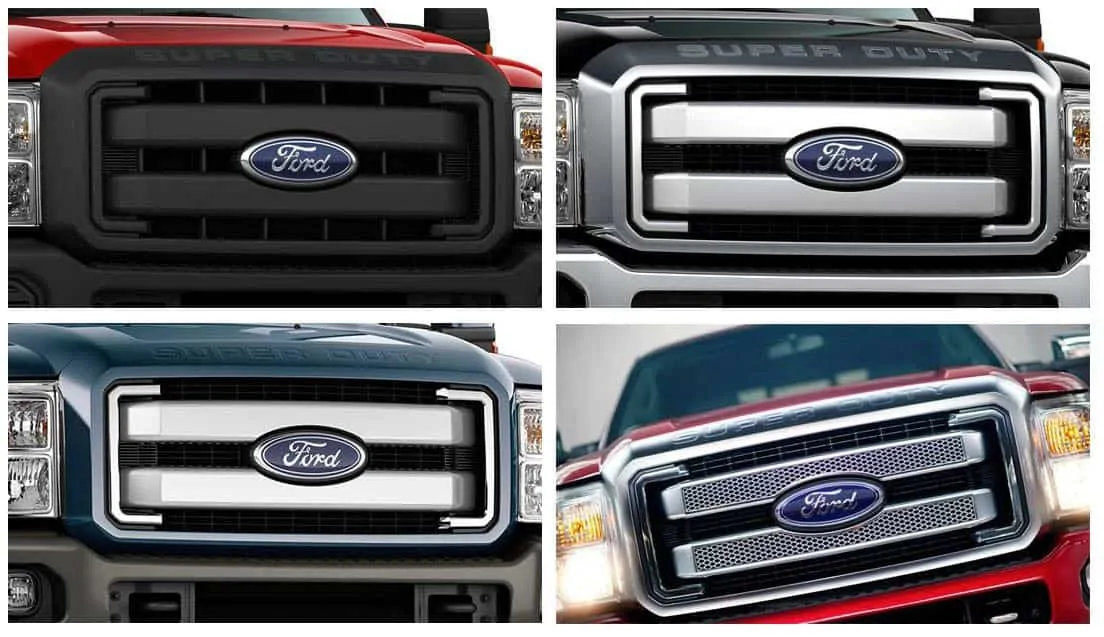For some time now premium brands — most notably Audi and Mercedes — have offered variation in the design of their vehicles’ front face. By creating different finishes for the grille surround and inner texture – and even playing around with how the logo mark is placed — the brands clearly differentiate two trim levels, typically orientating one aesthetic towards ‘sporty’ and another on a ‘traditional’ finish.
At the Detroit auto show, we saw other premium brands (Jaguar) but also mainstream brands (Ford, Toyota, Nissan) using this approach to great effect to give a greater breadth of flavor to mass-market products.

The new Ford F-150 is available with no less than five different face treatments (at least one for each trim level), and that strategy is now being rolled out across Ford’s wider truck range – we noticed it on the new F-250 Super Duty too (main image).

Nissan’s new Titan truck, a direct rival for the F-150, also adopts different grille variations. Its high-gloss chrome surround features the ‘titan’ insignia embossed along the top, contrasting markedly with the standard grille finish that features a dark, matte texture set within a body-colored surround.

It’s America’s best selling car though, the Toyota Camry, which most clearly shows the effectiveness of this treatment. Two options simply and effectively change the way you read the down-road-graphic of exactly the same car.
It’s the sort of trend we’re noticing increasingly frequently and we expect it to expand as manufacturers work out simple, cheap ways to allow consumer personalization and to spread the appeal of a single model line to a wider base of potential customers.
This article originally appeared on Car Design Research and was republished with permission.




